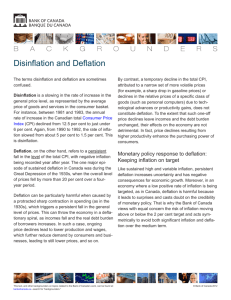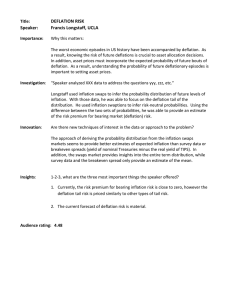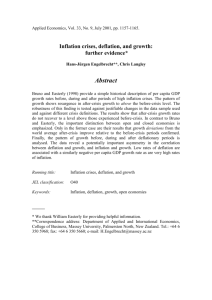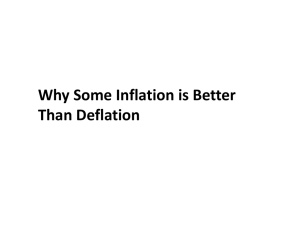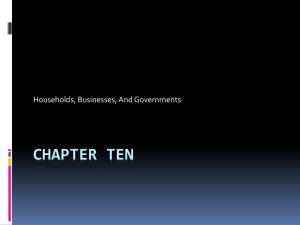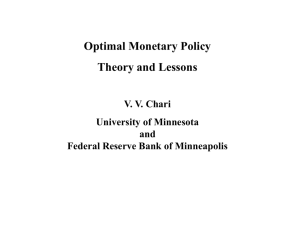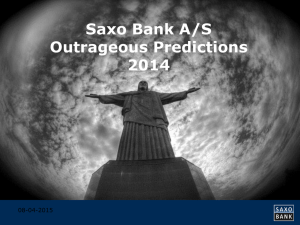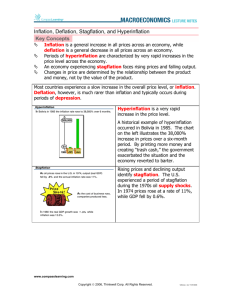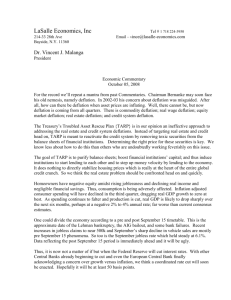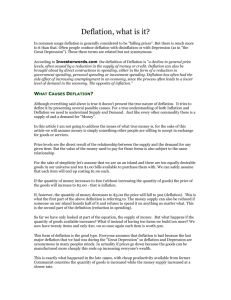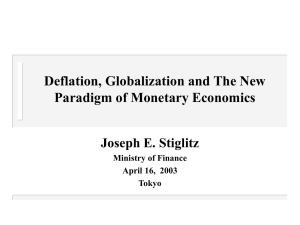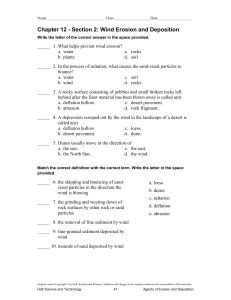Disinflation and Deflation
advertisement
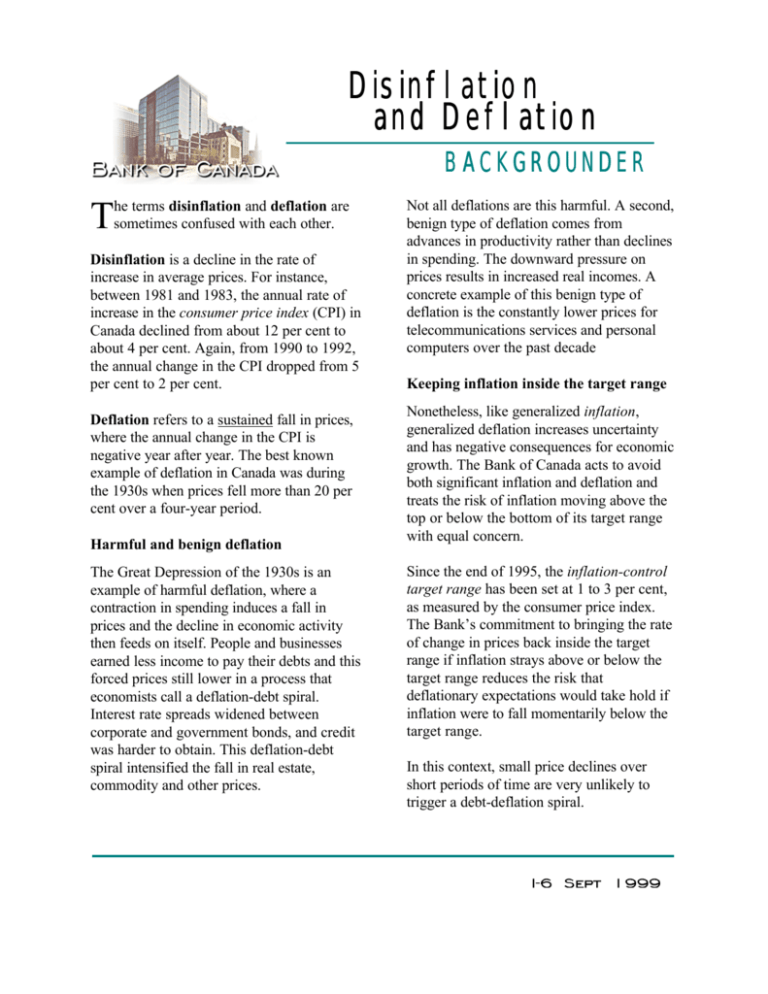
Disinflation and Deflation BACKGROUNDER he terms disinflation and deflation are sometimes confused with each other. T Disinflation is a decline in the rate of increase in average prices. For instance, between 1981 and 1983, the annual rate of increase in the consumer price index (CPI) in Canada declined from about 12 per cent to about 4 per cent. Again, from 1990 to 1992, the annual change in the CPI dropped from 5 per cent to 2 per cent. Deflation refers to a sustained fall in prices, where the annual change in the CPI is negative year after year. The best known example of deflation in Canada was during the 1930s when prices fell more than 20 per cent over a four-year period. Harmful and benign deflation The Great Depression of the 1930s is an example of harmful deflation, where a contraction in spending induces a fall in prices and the decline in economic activity then feeds on itself. People and businesses earned less income to pay their debts and this forced prices still lower in a process that economists call a deflation-debt spiral. Interest rate spreads widened between corporate and government bonds, and credit was harder to obtain. This deflation-debt spiral intensified the fall in real estate, commodity and other prices. Not all deflations are this harmful. A second, benign type of deflation comes from advances in productivity rather than declines in spending. The downward pressure on prices results in increased real incomes. A concrete example of this benign type of deflation is the constantly lower prices for telecommunications services and personal computers over the past decade Keeping inflation inside the target range Nonetheless, like generalized inflation, generalized deflation increases uncertainty and has negative consequences for economic growth. The Bank of Canada acts to avoid both significant inflation and deflation and treats the risk of inflation moving above the top or below the bottom of its target range with equal concern. Since the end of 1995, the inflation-control target range has been set at 1 to 3 per cent, as measured by the consumer price index. The Bank’s commitment to bringing the rate of change in prices back inside the target range if inflation strays above or below the target range reduces the risk that deflationary expectations would take hold if inflation were to fall momentarily below the target range. In this context, small price declines over short periods of time are very unlikely to trigger a debt-deflation spiral.
